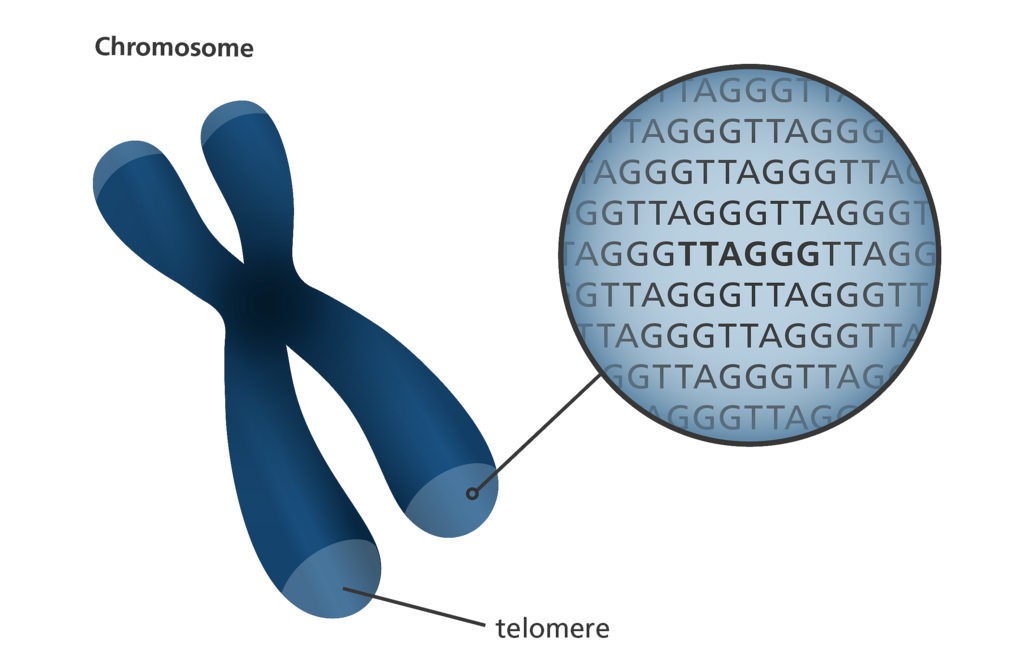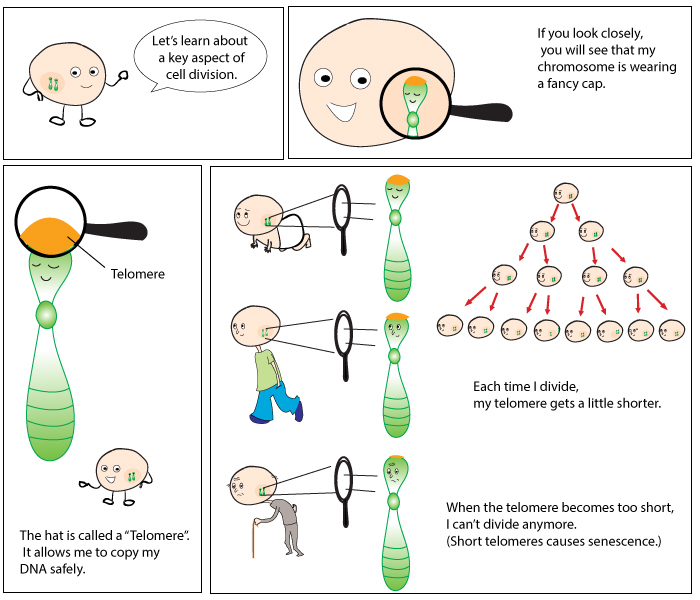Recently there have been advancements in genetic testing which claim to uncover how long one will live. Telomere testing is very new, and testing companies promise to make it known with almost certainty how long one will live.
What is DNA and genetic testing?

We are made of 100 trillion cells. Every cell in the human body has in it a nucleus. Inside the nucleus are 23 pairs of chromosomes. Inside each chromosome is the DNA (Deoxyribonucleic Acid) which is unique to that person. DNA is the main constituent of chromosomes, and our genes are part of our DNA.
What does our DNA look like? When looking at the DNA with the naked eye, it looks like a ball of a whitish filament. When microscopic DNA is observed, it may appear as a chromosome when the cell is dividing.
In a cell that is not in a division sequence, the DNA found under the electron microscope appears as a fine filament dotted with small balls. If we could look even more precisely, we would see that DNA is an assembly of two strands glued and helically wrapped around each other – the famous double helix discovered by Crick and Watson.
Genetic testing is the holy grail of the next era of diagnostic testing.
Our genes hold the key to who we are if we are predisposed towards cancer or cardiovascular problems if we will live long and many more questions.
What does a telomere do?

At each end of the chromosome is a structure called telomere. They are long repetitive sequences of DNA which act as capping. Its function is to protect the chromosome from damage when cell replication happens. Each time a cell divides the telomere becomes shorter and shorter. When telomeres become very short, they can no longer act as a protective capping, and the cell dies.
Therefore, the thinking goes shortening of the telomere can be used as a measure of the remaining length of life.
How long is a telomere to begin with?

- Smoking
- Consuming junk food
- Lack of physical activity
- Chronic stress
- Obesity
Cause damage to the telomeres. Shorter telomeres, very probably, lead to lower life expectancy.
How to get telomere tested?

Telomere tests will find the length of telomere remaining in your cells and claims that telomere testing is a way to uncover and predict how long you will live.
Telomere testing is offered over the internet. For about USD 100 you can send a droplet of blood to a lab which will send back test results after a few weeks. Paying an extra amount can get you a consult with someone who will explain the results. Or else, you can just order a dna test kit and do it yourself.
- You can choose to have it at a walk-in clinic with the help of a doctor who guides you through the test and interprets the results.
- You can order the test kit from a genetic testing company who direct you to a lab nearby which uses the equipment.
- You could ask your doctor to have it done.
Does it work? Is telomere testing accurate or a gimmick and hype?

No one seems to know for sure.
There are no well-known accepted methods for testing the length of telomeres. All of these companies use their proprietary method which has not been evaluated by another lab or research facility.
There is no regulatory authority in place for providing oversight and keeping these companies and their practices as genuine and authentic as possible.
A single telomere test is rarely accurate. Even if accurate, it cannot provide an understanding of how fast the telomeres are shrinking. To find that out one needs an experiment to be repeated every 3 or so years for at least a decade.
The test results by themselves mean little. They have to be interpreted by a medical practitioner who has the knowledge of the patient’s history and sufficient knowledge about the test.





